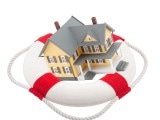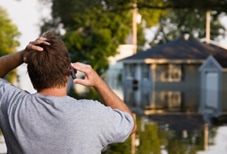|
According to a 2023 survey, 63% of workers said they would be unable to cover a $500 emergency expense.
This means a majority of Americans don’t have an emergency fund, which is a savings account with roughly three to six months of living expenses set aside for unexpected expenses. If you can, you should be working on building emergency savings. Even a small amount can add up over time. Learn about the most common reasons to tap your emergency fund. Job Loss Losing your job can be financially devastating, especially if you’re the primary earner in your household. Even if you qualify for unemployment benefits, emergency savings can help you keep up with bills. Emergency Home Repairs Homeowners can plan and budget for routine maintenance and repair tasks, but expensive repairs may arise suddenly. For example, a storm blows through and knocks a tree branch onto your roof or floods your basement. Whatever happens, it helps to have emergency savings to cover the cost without going into debt. Major Car Repair As with your house, your car doesn’t always give a warning before breaking down on the highway. Whether you have trouble with your brakes, engine or tires, having money saved up can get you back on the road. Medical Expenses Nearly half of American workers are enrolled in a high-deductible health plan, according to the most recent federal data. This can result in costly bills if you or one of your dependents has an injury or needs diagnostic testing. If you have access to a health savings account, you can save for medical expenses with pretax dollars. If not, your emergency fund will come in handy. Do you have questions about your insurance coverage and how it could help you save in case of property damage? Get in touch to talk about your policy.
0 Comments
Renovating your property has some serious perks, such as creating more space or updating your amenities.
Some upgrades, such as a new roof or security system, can even reduce home insurance costs. While others — like a pool — can have the opposite effect. Before you take on your next home improvement project, here’s what you should know about how renovations might change your premiums.
It’s no surprise that this year’s top home trends are all about practicality and comfort. And while you’ve probably already taken steps to improve your space over the last few months, there could be a few more ways to make the most of your property. Whether you have safety in mind or you’d like some design inspiration, take a look at the most exciting home trends for 2021: Colors and Moods Did you see Pantone’s color of the year for 2021? It’s actually two colors: Ultimate Gray and Illuminating (a vibrant yellow) are together described as “a marriage of color conveying a message of strength and hopefulness.” And speaking of warm and comforting, natural wood is also on the rise. When it comes to design, 2021 is all about mixing traditional and modern for a cozy feel. Connecting With Nature Feeling cooped up at home has motivated people to get closer to nature. You can tap into this trend by buying indoor plants, adding earth tones to your living room, freshening up any outdoor space you have, or going big with a brand new deck, porch or landscaping project. Smart Features for Health and Safety Smart and wellness-oriented features such as touchless faucets and flushers, motion sensor lighting, bidets and heated floors will continue to be in demand this year. Distinct Spaces This trend began a few months ago and will unsurprisingly continue in 2021. Both homeowners and homebuyers want separate rooms for work, Zoom, play, exercise, intergenerational living and more. Accomplishing this can be as simple as buying room dividers. Or, you can go big and renovate an existing open floor plan or add a new room or wing to your house. Do you have questions about how a home update will affect your coverage? Just need to check in? Reach out anytime. Home Insurance Coverage is provided — subject to a $1,000 limit — for debris removal of fallen trees.
The ISO form limits coverage to the insured’s trees felled by windstorm or hail or the weight of ice, snow, or sleet, or to a neighbor’s trees that are felled by a coverage C peril. However, before there is any coverage under this provision, the tree must damage a covered structure or block a driveway which prevents a motor vehicle registered for use on public roads from entering or leaving the residence premises. Additionally, the fallen tree could block a ramp or other access device used to assist a handicapped person from entering or leaving the dwelling. The limit is the most that will be paid for any one loss, subject to a limit of $500 for removal of any one tree. A question raised by the additional coverage for removal of trees is whether the limit applies to the cost of removing the part of the tree that rests on the damaged structure, or whether that cost is considered to be part of the cost of repairing the structure. For example, if a tree is felled by windstorm and falls onto the dwelling, causing extensive damage, no repairs can begin until the parts of the tree resting on the building are cut away, so it would seem logical to categorize such costs as repair costs. However, the policy language, if strictly interpreted, would include those costs within the $1,000 limit. The policy provides that the insurer “will also pay [the] reasonable expense, up to $1,000, for the removal from the -‘residence premises’ of” trees felled by the described perils. “Residence premises” is defined in the policy as “the one- to four-family dwelling, other structures, and grounds…where [the insured] reside[s].” Thus, the $1,000 limit appears to apply to the removal from the dwelling and other structures as well as to removal from the grounds. However, under this arrangement, the cost of removing the tree from the structure should still be considered part of the repair cost. If the insurance coverage for repairs is insufficient, the “additional coverage” (coverage in addition to that otherwise provided for in the policy) may be called upon. 5 Simple Steps to a Safer Home Keeping your family safe and your home in good condition are top priorities for any homeowner. What’s one way to help achieve these goals? You can conduct a home safety audit each year. This simply means inspecting a few things and reviewing emergency plans with everyone in your household. These easy safety checks can make all the difference. Here’s where to start. Locate and test smoke alarms. Do you have enough smoke alarms, and are they working? You want one on each floor, including one inside and outside each sleeping area. Test each alarm, replace expired batteries and replace alarms older than 10 years. Practice getting out and meeting up. It’s important to have a well-understood evacuation plan in case of a fire or other emergency. Go over the details (like how to exit safely and how to gather up your pets) and practice them together. Settle on a meeting place outside. Check fire extinguishers. Do you have one in the garage and one in the kitchen? Make sure the dial shows the extinguisher is still pressurized. Review the instructions for using it (and know when to use it and when to evacuate). Look for kitchen hazards. Has grease built up around the stove or on your range hood filter? t could start a cooking fire. Also, make sure cleaning products are locked away from young children and pets. Check carbon monoxide detectors. Make sure they’re still working and have fresh backup batteries. Some are integrated with smoke alarms, but plug-in ones at knee level may provide better detection. Do you have questions about keeping your home safe or about your coverage? Reach out anytime for assistance. Power outages can be a major inconvenience. They can also create problems for you, your family and your home as you shift into "emergency mode" to prevent your food from spoiling, to safely navigate your home in the dark, or simply to keep the heat on. Investing in a home generator can help make being without power more bearable — and can even fuel some fun when not being used for an emergency.
Home generators come in a variety of types and sizes, from portable versions to "standby" and inverter units. Portable generators typically run on gasoline and need to be operated at a safe distance from any structure. Standby generators start automatically when the power goes out, and are run on propane or natural gas. Inverter generators have a more complex engine than the other types, and are much quieter than their conventional counterparts. Regardless of which type of generator you choose, you will need to follow the manufacturer recommendations for safe operation of the unit. It's helpful to research this useful home device before you urgently need it, so here are 10 reasons to consider if you're thinking about purchasing a home generator of your own. 1. We can't control the weather. Most power outages are weather-related. As the number and severity of extreme weather events rises, so does the likelihood of a blackout lasting 24 hours or more. 2. You have well water. Without electricity, your well pump and filtration systems will quickly lose the ability to provide fresh, safe water for drinking, bathing, heating and more, to your house. 3. You have a sump pump. If you rely on a sump pump to keep your basement or crawlspace dry — including all the possessions you keep in those areas — losing power means you also lose protection against water damage in those areas. 4. You work from home. If you run a business or work out of your home, you know every minute counts. Going without power for even an hour can be a major inconvenience — if not a major risk — to you, your clients and customers. 5. Food spoils quickly. According to the FDA, perishable food items should be thrown out once your refrigerator has been without power for as little as four hours.1 Travelers wants to help you protect the things that matter to you. We offer a wide breadth of products so you can be covered at home and on the road. 6. You live in a high-risk or severe climate area. Some states are more vulnerable to weather-related outages. Others have such severe temperature extremes that power to control air conditioning and heating systems can be essential for comfort and safety. If you live in one of these areas, your risk to the potentially devastating effects of a power outage increase significantly. 7. Your property is vacant for extended periods of time. If you are a "snowbird," frequent traveler or own a seasonal home, having a generator can protect your property from outage-related emergencies — whether you're in or out of town. 8. Someone in your home relies on an electrically powered medical device. If you or a loved one requires the assistance of a home medical device that runs on electricity, a power outage can be deadly. A generator can help keep those devices running, but you also will want to check with a healthcare professional for suggestions on how to weather power outages with your particular medical device.2 9. You have a hybrid or electric car. Make a portable generator go the extra mile! When not using it for your basic emergency power needs, keep it in your car to stay charged no matter where the road takes you. . Generators aren't just for emergencies. Portable generators can be put to use at work or play in, around and away from your home, too:
Whether it's due to storms, falling trees or some other challenge, power outages can bring an assortment of problems for home owners. A home generator can become one of your go-to remedies for those unexpected situations. Checking out the options before you lose electrical power is one smart way to beat the crowds who'll be racing to scoop up a home generator, for that "next time" outage scenario. A Look At A Few Popular Decorating Styles Popular decorating styles are always changing. Is your home up to date on the latest fashion trends and decorating tips?
Popular decorating styles are fun, interesting and they just add something to talk about to the rest of the home. If you are considering a redo of your living room, your kitchen, your bedroom or virtually any other room in or outside of your home, consider some of today’s more popular choices. You are sure to find one, or two, that you really love to use. Traditional: We have to start with the traditional look because it just does not go out of style. Here, the look is furniture that comes from the Kings and Queens of yesteryear, early American trends and a wide range of other formal styled items. You are looking for traditional to come through in the upholstery, in the window treatments and even in the accents that are placed around the room. Traditional is a style that is highly expensive to pull off with exceptional quality furnishings. Shabby Elegance: Who’s to say that this is not one of the best methods of decorating. The look is that of chic, something that features light toned wall and furniture colorings, old china pattern looks, warm yet comfortable pieces that create a sense of relaxation when you look at them. Contemporary: Modern contemporary looks have always been in style in the last decade. These looks are influenced by pieces that are bold and bright, different and unique and are functional yet are also more of a piece of art as well. You will find straight, clean lines in the furnishings and walls here. Art Deco: This popular decorating style is one that seems quite a bit like the modern contemporary yet it has a more flowing look to it. The lines are not as straight, but rather are curved. Rustic: The look for the log cabin is not gone. In a rustic Southwestern feel, you will have woods used of various types. It will have a laid back feel with warm throws and soft, comfortable furniture. The color scheme here is that of warm, rich colors that complement the woods. French Country: This is a very popular choice in decorating styles. Here, you will have many bright colors and will have that feel of whimsical dreaming. Wood finishes are done with fruitwoods and cherry. Art work with color is on the walls. One of these popular decorating styles will work perfectly in your home. There are plenty to select from to help you to transform the look for your home into something that is amazing. |
better Insurance
|
-
HOME
- Send me a Home Insurance Quote >
- FLOOD Insurance, Massachusetts >
- Cape Cod Home Insurance
- Pay Your Home Insurance Bill Online
- Ordinance or Law Coverage
- How to Prevent a Claim on your Home Insurance Policy
- Videos - Cape Cod Real Estate Tips >
- Cape Cod Massachusetts Arbella Insurance Discounts
- Cape Cod Massachusetts Lloyds of London Home Insurance
- Safety Insurance Discounts for Cape Cod, Massachusetts
- MPIUA - MA Property Insurance Underwriting Association "Fair Plan"
- Cape Cod Massachusetts Home Protection Insurance
- Hurricane Preparedness >
-
AUTO
- Send me an Auto Insurance Quote for Cape Cod, Massachusetts
- BOAT Insurance >
- Cape Cod, MA Dept. of Motor Vehicles
- Cape Cod Massachusetts - Report an Auto Insurance Claim
- Auto Insurance Quote - CAR BUYING TIPS : Auto Insurance for Cape Cod, MA
- InControl Driver Training
- Car Insurance for Cape Cod Massachusetts - Arbella Insurance - Send me an Auto Quote >
- Plymouth Rock - Send me an Auto Quote >
- Encompass Insurance Discounts
- Safety Insurance - Send me an Auto Quote >
- Travelers Insurance Discounts
- Progressive Insurance - Send me an Auto Quote
- LIFE
- OFFICES
- ABOUT US
- Stay Home
- Home Insurance Explained
- Agent Login
- Privacy Policy
- Videos - Cape Cod Real Estate Investing, Taxes & Insurance
- Videos - Cape Cod Coastal Real Estate
- Português
Arthur D. Calfee Insurance Agency, Inc. is a friendly local insurance agency proudly offering Massachusetts, Cape Cod and the Islands. A-Excellent AM Best rating, A+ Excellent by the BBB
Using innovative thinking, cutting-edge tools and expert resources at national and local levels, we deliver the best possible outcome on every policy we manage. Need Home Insurance? Easy, Fast, & Secure Home Insurance. Get Free Quotes 100% Online Now! Available 24/7. Affordable Rates. Cover Your Biggest Investments. Get a homeowners insurance quote, find coverage options. We'll help you understand and customize the right home insurance coverage for you.
Home is where your heart is—along with a healthy chunk of your net worth. Get started today with a free homeowner's quote.
Compare home insurance quotes today and save on protection for your biggest investment. Build a Custom Policy & Make the Switch! Our local underwriting professionals focus exclusively on finding the best home insurance, homeowner's insurance, hazard insurance, investment property insurance, flood insurance, flood zone information, vacation home insurance, second home insurance, auto insurance, collector car insurance, business insurance, general liability insurance, property insurance, professional liability insurance, contractor's liability insurance, worker's comp insurance, key man insurance, whole life insurance, term life insurance, group or personal disability, & long-term care insurance policies to patrons in the following Cape Cod, Massachusetts towns, communities and villages: Barnstable, Bourne, Pocasset, Brewster, Buzzards Bay, Centerville, Chatham, Cotuit, Craigville, Dennis, East Dennis, Eastham, Falmouth, East Falmouth, Hatchville, West Falmouth, North Falmouth, Woods Hole, Harwich, Hyannis, Hyannisport, Martha's Vineyard, Nantucket, Marstons Mills, Mashpee, Orleans, Osterville, Provincetown, Sandwich, Sagamore, Sagamore Beach, Truro, Wellfleet, Yarmouth, and Yarmouthport. Real-Time Pricing. Insurance coverage: Wind Damage, Fire Loss, Water Damage. Protect your home and belongings. Low Rates For Your Best Options to Save Money On Great Coverage! Get a quote today. Home insurance helps protect your house and your family.
Using innovative thinking, cutting-edge tools and expert resources at national and local levels, we deliver the best possible outcome on every policy we manage. Need Home Insurance? Easy, Fast, & Secure Home Insurance. Get Free Quotes 100% Online Now! Available 24/7. Affordable Rates. Cover Your Biggest Investments. Get a homeowners insurance quote, find coverage options. We'll help you understand and customize the right home insurance coverage for you.
Home is where your heart is—along with a healthy chunk of your net worth. Get started today with a free homeowner's quote.
Compare home insurance quotes today and save on protection for your biggest investment. Build a Custom Policy & Make the Switch! Our local underwriting professionals focus exclusively on finding the best home insurance, homeowner's insurance, hazard insurance, investment property insurance, flood insurance, flood zone information, vacation home insurance, second home insurance, auto insurance, collector car insurance, business insurance, general liability insurance, property insurance, professional liability insurance, contractor's liability insurance, worker's comp insurance, key man insurance, whole life insurance, term life insurance, group or personal disability, & long-term care insurance policies to patrons in the following Cape Cod, Massachusetts towns, communities and villages: Barnstable, Bourne, Pocasset, Brewster, Buzzards Bay, Centerville, Chatham, Cotuit, Craigville, Dennis, East Dennis, Eastham, Falmouth, East Falmouth, Hatchville, West Falmouth, North Falmouth, Woods Hole, Harwich, Hyannis, Hyannisport, Martha's Vineyard, Nantucket, Marstons Mills, Mashpee, Orleans, Osterville, Provincetown, Sandwich, Sagamore, Sagamore Beach, Truro, Wellfleet, Yarmouth, and Yarmouthport. Real-Time Pricing. Insurance coverage: Wind Damage, Fire Loss, Water Damage. Protect your home and belongings. Low Rates For Your Best Options to Save Money On Great Coverage! Get a quote today. Home insurance helps protect your house and your family.
Testimonials & Endorsements for the Best Insurance Agent on Cape Cod, MA
PHONE: (800) 479-2601 CUSTOMER SUPPORT & SERVICE
Please note: The above is meant as general information to help you understand the different aspects of insurance. This information is not an insurance policy, does not refer to any specific insurance policy, and does not modify any provisions, limitations, or exclusions expressly stated in any insurance policy. Descriptions of all coverages and other features on this page are necessarily brief; in order to fully understand the coverages and other features of a specific insurance policy, we encourage you to read the applicable policy and/or speak to an insurance representative. Coverages and other features vary between insurers, vary by state, and are not available in all states. Whether an accident or other loss is covered is subject to the terms and conditions of the actual insurance policy or policies involved in the claim. References to average or typical premiums, amounts of losses, deductibles, costs of coverages/repair, etc., are illustrative and may not apply to your situation. We are not responsible for the content of any third-party sites linked from this page.
© 2024 Copyright, Arthur D. Calfee Insurance Agency, Inc.
Calfee Cares.® Privacy Policy
Calfee Cares.® Privacy Policy



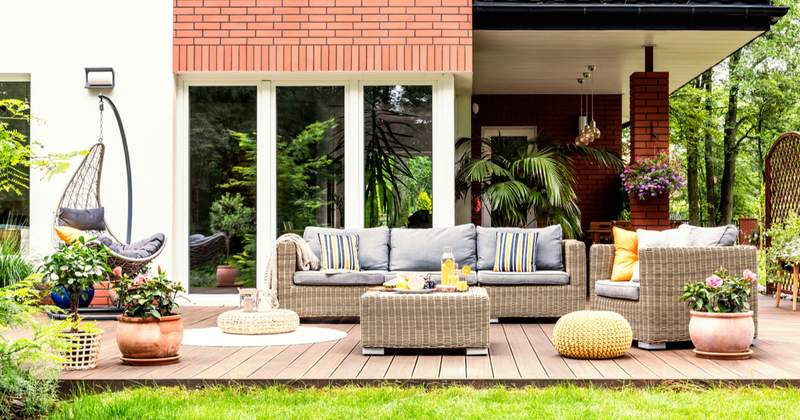
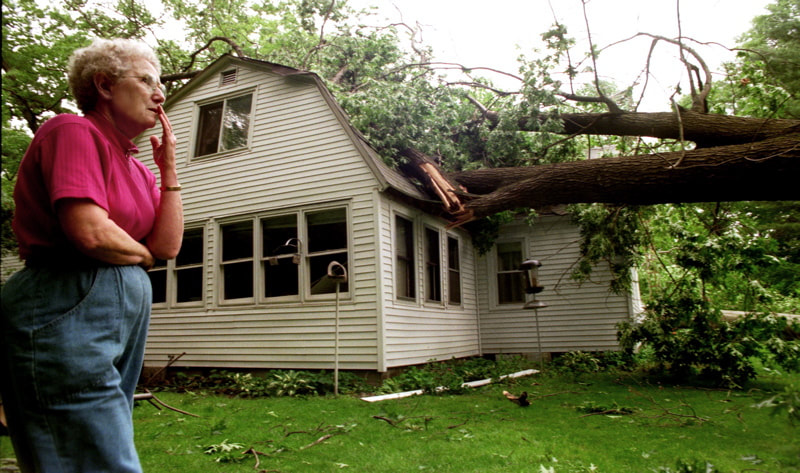
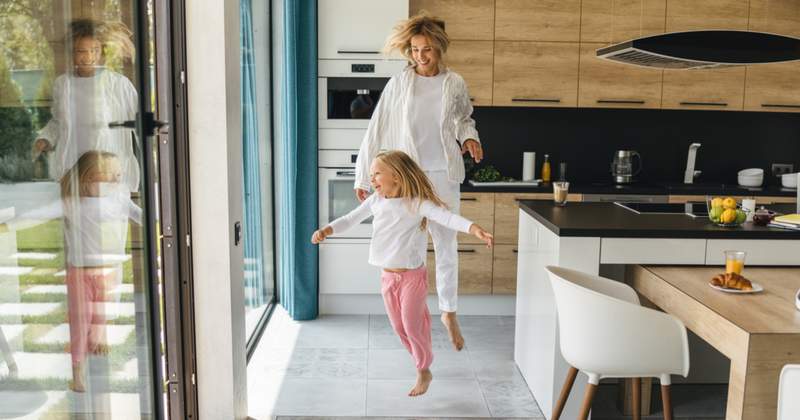
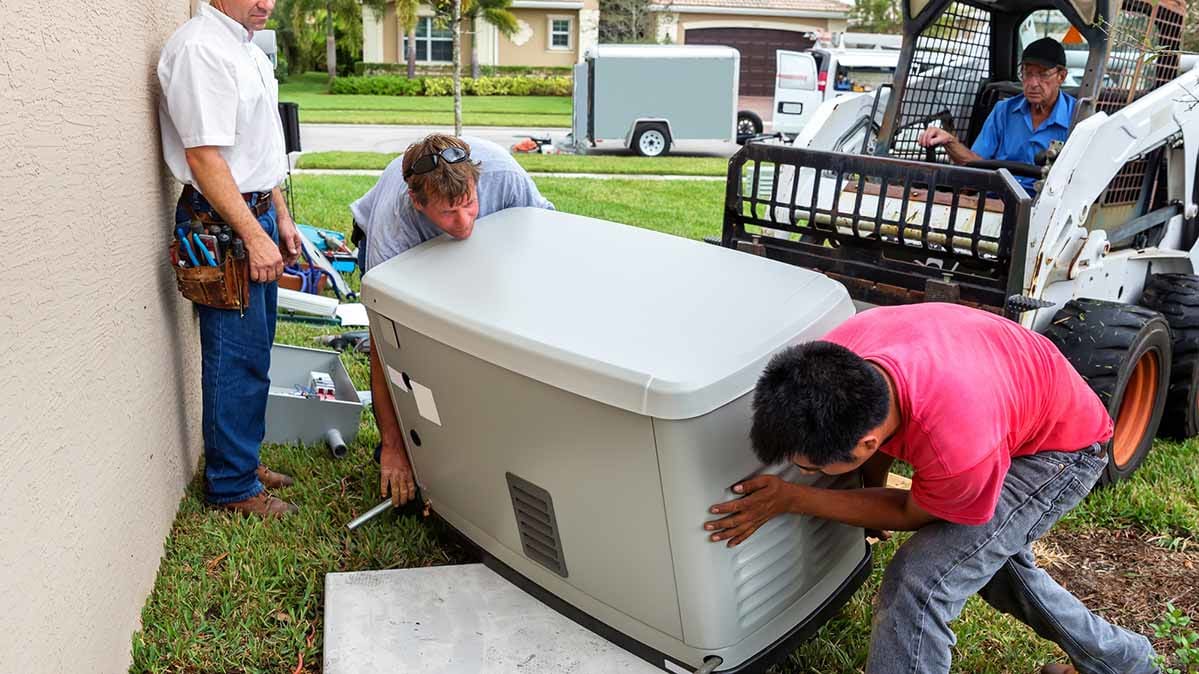
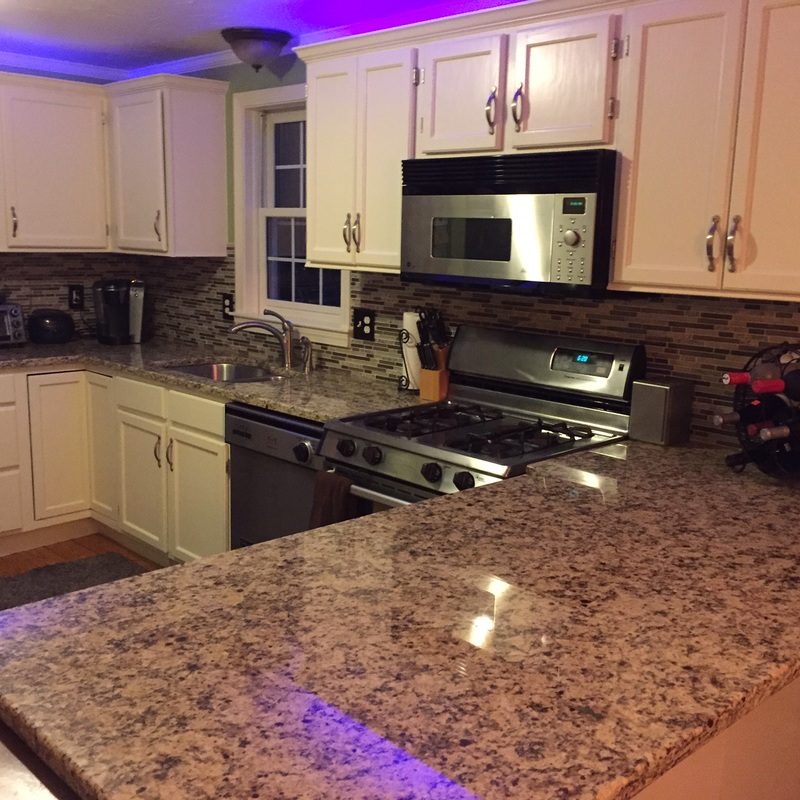





 RSS Feed
RSS Feed




